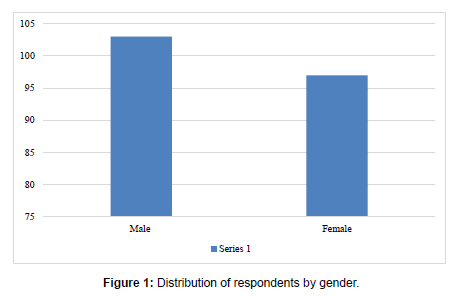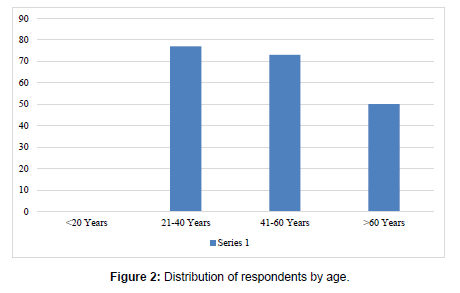The Effect of the Lucien Active Insole System on Orthopaedic Complaints
Received: 04-Sep-2024 / Manuscript No. jnp-24-148471 / Editor assigned: 06-Sep-2024 / PreQC No. jnp-24-148471(PQ) / Reviewed: 20-Sep-2024 / QC No. jnp-24-148471 / Revised: 23-Sep-2024 / Manuscript No. jnp-24-148471(R) / Published Date: 30-Sep-2024 DOI: 10.4172/2165-7025.1000743
Abstract
Orthopaedic complaints are the most prevalent presentation in the medical field. Many complaints and conditions are caused by alterations of the body's kinetic chain. The Lucien Active Insole system purports to alter the kinetic chain, reeducating the body to hold it in neutral. This study evaluates the efficacy of the Lucien Active Insole system's effects on the symptomatology associated with Orthopaedic conditions.
Keywords
Lucien; Insoles; Orthotics; Orthoses; Orthopaedics; Pain
Introduction
Approximately 1.71 billion people have musculoskeletal conditions worldwide. Musculoskeletal conditions are the leading contributor to disability worldwide, with low back pain being the single leading cause of disability in 160 countries. Musculoskeletal conditions significantly limit mobility and dexterity, leading to early retirement from work, lower levels of well-being and reduced ability to participate in society. Because of population growth and ageing, the number of people living with musculoskeletal conditions and associated functional limitations is rapidly increasing [1,2].
Musculoskeletal pain is managed by a plethora of treatment options, most delivered in primary care. These include non-pharmacological treatments (e.g. self-management advice and education, exercise therapy, manual therapy and psychosocial interventions), complementary therapies (e.g. acupuncture), and pharmacological interventions (e.g. analgesics, non-steroidal anti-inflammatory drugs (NSAIDs), corticosteroid injections). For those with refractory symptoms, surgical interventions (e.g. arthroscopic debridement, total knee replacements, and laminectomies) may be considered [3]. Evidence from trials and systematic reviews indicate that most treatments for musculoskeletal pain provide small to moderate short-term benefits, with a lack of evidence for long-term effectiveness [4]. Many neuromuscular training (NMT) prevention programs have been introduced with the aim to reduce injury risk [5]. This treatment modality has been proposed to improve the feedback of mechanoreceptors which may lead to sensorimotor integration and subsequently the adaptation of neuromuscular control reflected in alteration of muscle contraction at various points along the Kinetic Chain [6].
The Lucien Active Insole System utilizes a two-phase approach to NMT. The first stage utilizes a Force and Pressure mapping of the foot to determine stance issues and the location of muscle imbalance. This system has a positive predictive value in diagnosing Orthopaedic complaints [7]. Once the force map has been evaluated, the active insole system will produce a customized insole to begin the NMT. This is accomplished by adding small pressure dispersion and angle adapters to the insole based on the readout from the pressure mapping. While most NMT systems, including unbalanced footwear systems are utilized for only part of the day, and require repeated changing of shoe gear; The Lucien Active insole system can be worn for the whole day without a change of shoe gear, because it is a comfortable insole system and not an out of shoe system. This will facilitate better use of the device by patients.
This study is a retrospective evaluation of the efficacy of the Lucien Active Insole system for the treatment of symptomatology in patients with Orthopaedic complaints.
Method
Over one thousand questionnaires were sent out to patients who had purchased a pair of Lucien Active Insoles. Questionnaires were sent by email to these patients, and to those without access to email, questionnaires were performed orally by telephone. All genders, ages, weights and complaints were included in the list of patients who were sent questionnaires. The only exclusion factor was that to be included in the study, a subject must have purchased the insoles at least six months prior to the study.
The questions included demographic data, including age, gender and weight. The next section of the questionnaire identified the chief complaint which necessitated purchase of the insoles. Lastly, efficacy of the insole system was evaluated with a series of questions quantifying the improvement with use of the insoles. A few subjective questions were asked to evaluate overall satisfaction with the insoles as well as the customer experience.
The first 200 responses were recorded and used for evaluation in this study. These responses were submitted online and once the response count hit 200, the database was closed to further response. Responses were checked for completion, as each question was going to be evaluated. Once the questionnaires were approved, the responses were tabulated and subjected to linear and analytical statistical analysis.
Result
The following results were tabulated from the responses to the questionnaires. 97 of the respondents were Female and 103 were Male, Figure 1 and Figure 2 demonstrates the age distribution of the Respondents. Figure 3 demonstrates the weight distribution of the respondents. Figure 4 demonstrates the distribution of Orthopaedic complaints. The choices for that were: General discomfort, Neck pain, Back Pain, Foot Pain, Knee Pain, and Hip Pain or Multiple Complaints. Subjects could respond with more than one answer for chief complaint. Figure 5 represents the degree of subjective severity at time of presentation independent of the chief complaint. For subjects who reported general discomfort, the designation of 1 was used as no report Figure localized pain could be reported. Figure 6 demonstrates the degree of relief from the severity of the chief complaint to the time of response to the questionnaire. Figure 7 demonstrates the degree of relief by chief complaint (Figures 1-7).
Of the 55 subjects who reported a chief complaint of General Discomfort, none of them said their discomfort worsened and all said their discomfort either stayed the same (20/55) or improved (35/55). That results in 36% saying their discomfort stayed the same over a period of two years This is a statistically significant result. Across all reports of pain (≥2), there was a statistically significant reduction of pain >50%. Across all chief complaints there was a statistically significant decrease in pain. There was an almost linear correlation between the degree of related pain and the degree of relief provided. Across chief complaints the greatest relief was found in foot pain. This was followed by Back and then hip pain. Those with multiple complaints showed a significant improvement but it was not sussed out as to the degree that each individual complaint was improved.
Discussion
This was a well-designed retrospective study. The questionnaire was comprehensive and objective. There was little room for misinterpretation of the questions by the respondents or of the responses by the reviewers. The questions that were evaluated and subjected to evaluation were short and concise questions that were answered with a numerical scale. These numerical answers were subjected to the appropriate statistical analysis. Short answer questions were included in the questionnaire but were evaluated separately because of a) the subjective nature of the responses, and b) the variability of the wording of the responses making quantification and evaluation difficult. These responses were evaluated for the overall “feel” of the respondent’s feelings about the Lucien system.
The study took into account the effect of the Lucien system across age and gender demographics. It also evaluated the effect of weight on the efficacy of the system. Lastly it looked at the effect of the system across a wide range of Orthopaedic conditions. The results were uniformly excellent, with a significant and sustained reduction in symptomatology across variables. The only variable that had a negative effect was excessive weight over time. After an initial decrease in the severity of the complaints, the effect of the insoles was reduced over time. A root cause analysis of this revealed that the materials used for the insole system, were chosen for their delicacy; the downside of that was the speed at which they wore out when subjected to chronic excessive compression from excessive load.
One thousand questionnaires were sent out to respondents. Only about 400 responded of those only the first 200 were included in the study. No exclusion was made based on responses, rather 200 was determined to be the number of responses needed to allow for statistical analysis. The online response was closed after 200. While this is a good and random way to perform a retrospective analysis, the sponsor might want to re-perform the study with a bigger group of respondents. This would give even more weight to the statistical analysis.
A significant percentage of respondents presented with a chief complaint of general discomfort with a low Pain Response [1]. This further reduced the number of responses to be evaluated for efficacy in reduction of pain.
While this retrospective study was comprehensive and well-designed, it would have had more power as a prospective study. The drawback of the prospective study would be the number of subjects needed to satisfy the evaluation across demographic and Orthopaedic complaint variants. It might be suggested that a smaller scale study focusing on one demographic and one complaint be the way to begin. Also, if a further retrospective study were to be conducted, it would be recommended that general discomfort be removed from the responses and that the complaint of multiple disorders be further dissected in the questionnaire.
Conclusion
From this retrospective study it is clear that the Lucien Active Insole System has a positive effect on Orthopaedic complaints. Excessive weight and obesity decreased the longevity of this effect, but changes to the insole system should greatly increase that factor as well. To confirm the efficacy of the system, a prospective controlled study is recommended and is in the planning stages.
Acknowledgement
None
Conflict of Interest
None
References
- Cieza A, Causey K, Kamenov K, Hanson SW, Chatterji S, et al. (2021) Global estimates of the need for rehabilitation based on the Global Burden of Disease study 2019: a systematic analysis for the Global Burden of Disease Study 2019. Lancet 396: 2006-2017.
- Woolf AD, Pfleger B (2003) Burden of major musculoskeletal conditions.Bull World Health Organ 81: 646-656.
- Babatunde OO, Jordan JL, Van der Windt DA, Hill JC, Foster NE, et al. (2017) Effective treatment options for musculoskeletal pain in primary care: A systematic overview of current evidence. PLoS One 12: e0178621.
- Foster NE, Dziedzic KS, van der Windt DA, Fritz JM, Hay EM (2009) Research priorities for non-pharmacological therapies for common musculoskeletal problems: nationally and internationally agreed recommendations.BMC Musculoskelet Disord 10: 3.
- Sugimoto D, Myer GD, Foss KD, Hewett TE (2015) Specific exercise effects of preventive neuromuscular training intervention on anterior cruciate ligament injury risk reduction in young females: meta-analysis and subgroup analysis. Br J Sports Med 49: 282-289.
- Zech A, Hübscher M, Vogt L, Banzer W, Hänsel F, et al. (2010) Balance Training for Neuromuscular Control and Performance Enhancement: A systematic review. J Athl Train 45: 392-403.
- Rosenblum JI, Corcoran M, Doh K, Yonemoto G, Bains S, et al. (2020) An Evaluation of the New Step Algorithm for Diagnosing Proximal Orthopedic Conditions Utilizing Plantar Foot Force. J Nov Physiother 10: 1-4.
Indexed at, Google Scholar, Crossref
Indexed at, Google Scholar, Crossref
Indexed at, Google Scholar, Crossref
Indexed at, Google Scholar, Crossref
Indexed at, Google Scholar, Crossref
Citation: Rosenblum JI (2024) The Effect of the Lucien Active Insole System onOrthopaedic Complaints. J Nov Physiother 14: 743. DOI: 10.4172/2165-7025.1000743
Copyright: © 2024 Rosenblum JI. This is an open-access article distributed underthe terms of the Creative Commons Attribution License, which permits unrestricteduse, distribution, and reproduction in any medium, provided the original author andsource are credited.
Share This Article
Recommended Journals
Open Access Journals
Article Tools
Article Usage
- Total views: 513
- [From(publication date): 0-0 - Apr 26, 2025]
- Breakdown by view type
- HTML page views: 322
- PDF downloads: 191







